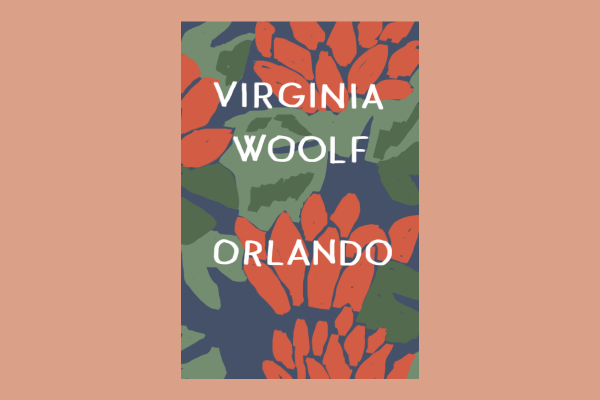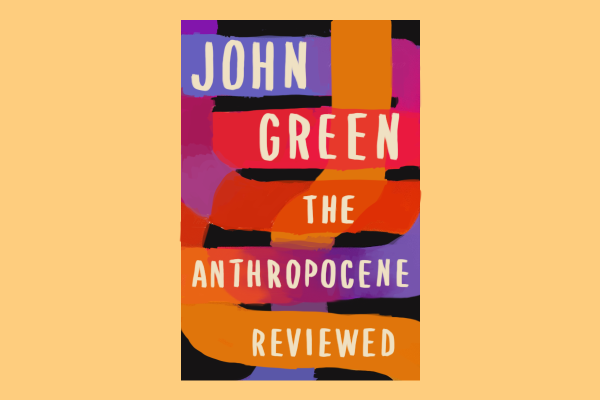
“Red” by John Logan
“When I was your age, art was a lonely thing: no galleries, no collecting, no critics, no money. We didn’t have mentors. We didn’t have parents. We were alone. But it was a great time, because we had nothing to lose and a vision to gain.”
“Red,” by playwright John Logan, is a two-man show about artist Mark Rothko and his young workshop assistant, Ken. The play is short, focusing on the difficult time period when Rothko was creating the “Seagram Murals” for The Four Seasons Restaurant in New York City, which he ultimately never handed over to the hotel. It focuses on conversations and dynamics between the two men, one aging and one fresh out of school. Most of the text is Rothko giving angry, existential monologues about the future of painting and art, but every so often, Ken challenges the arrogant man, making for an intellectually exciting watch. Rothko, who died by suicide in his mid-60s, was a deeply challenged man, as most artists are, and Logan strips the art God figure down to a real human being.
While you can read this play, you can also watch it in the theater or watch it on streaming services like Prime Video and Apple TV — though, I prefer the reading. Everything Rothko and Ken say to each other is profound and philosophical, and Logan writes from Rothko’s point of view incredibly poignantly. My deep love for abstract expressionism hasn’t been able to merge with the written word so beautifully in other pieces of work, and I can’t imagine “Red” ever being replaced by any other play as my favorite.
— Alexa Donovan, Arts Editor

“Orlando: A Biography” by Virginia Woolf
When I first picked up Virginia Woolf’s “Orlando,” I could not have been less prepared for the time-warping and gender-defying ride that this book would be. Spanning the course of 300 years, “Orlando” is written as a biography of the titular character, who ages 36 years throughout the novel and, somewhat magically, changes from a man to a woman.
In the late-16th century, Orlando is a young nobleman and poet in Queen Elizabeth’s court, and after experiencing his first love and heartbreak, he flees England for Constantinople, where he falls into a seven-day trance and wakes up as a woman — an occurrence that doesn’t seem to surprise or trouble her. By the end of the novel, it is 1928 and Orlando has returned to England, where she eventually marries, finishes her three-century-old poem and learns to embrace all the past lives and loves she has had.
Woolf dedicated “Orlando” to her lover Vita Sackville-West, modeling the character of Orlando after Sackville-West and her family history. For example, Woolf parallels Orlando’s inability to inherit her familial home with Sackville-West, who was similarly unable to inherit her childhood home, Knole. I love how clearly Woolf’s love for Sackville-West comes through in her playful and heart-achingly beautiful writing, which makes the novel feel very personal. While at times dense, the charming prose and witty irony will draw you in as it warps time and pokes fun at constructed gender roles and binaries, exploring what it truly means to be one’s real self.
— Katherine Welander, Copy Chief

“The Anthropocene Reviewed” by John Green
What do sunsets, sycamore trees and Auld Lang Syne all have in common? According to John Green, they all deserve five stars. In his anthology of essays reviewing everything from teddy bears to “Penguins of Madagascar” to the human capacity for wonder — Green’s voice is both commanding and sentimental. He effortlessly carries the conversation from topics like the Lascaux Cave Paintings to scratch-n-sniff stickers without missing a beat, ending each chapter with a rating between one and five stars. It’s impossible to predict exactly where a topic will lead — a review of something as oddly specific as velociraptors can evolve into a reflection on the difference between seeing and believing. In quintessential Green fashion, he mixes nerdy retellings of history with poignant stories that sucker punch you when you least expect it.
“The Anthropocene Reviewed” is like a vintage sweatshirt; you can come back to it over and over again, and it’ll be just as comfortable. The chapter on “New Partner” is my go-to for getting over a breakup, the “Monopoly” review is the perfect clever yet angry critique of our capitalistic society and “The QWERTY Keyboard” essay has gotten me through a fair amount of writer’s block. No matter what emotion you’re looking to feel, no matter how specific, Green has a review in mind. I give “The Anthropocene Reviewed” five stars.
— Naisha Roy, Editor-at-Large

“Outlander” by Diana Gabaldon
As the leaves begin to turn and the occasional breeze creeps around my shoulders, fall becomes tangible. The cloudy humid days make me want to stay in bed with a fantasy book in one hand and a hot cinnamon spice tea in the other. This season, the fantasy book of choice is “Outlander” by Diana Gabaldon.
The first book in the titular quartet, “Outlander,” follows Claire Randall, a former World War II English nurse visiting the Scottish Highlands with her husband. When told of her fortune, she is met with a paradoxical future: she will stay put, but embark on a life-changing journey. Claire finds meaning in these fateful words once she travels back in the past, and all of a sudden she is thrown into the middle of a fight between English redcoats and Scottish Highlanders in the year 1743.
To James Fraser, a young, wanted Highlander, Claire is a “Sassenach,” or Outlander. However, as Claire mends his wounds, they meet each other in the middle of two different worlds and times. Their story is one filled with wonder and history, recreating a historical world filled with struggle, magic and love.
— Diana C. Sánchez González, Contributing Writer
Contact the Arts Desk at [email protected].

























































































































































